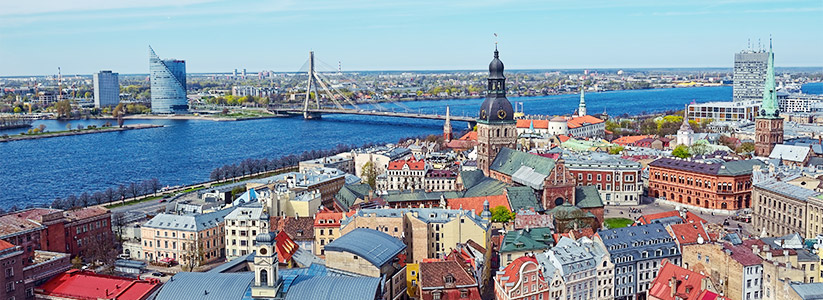




RIGA
During the centuries Riga was famous as an important trade centre; now it is the largest and the most cosmopolitan city in the Baltic States. The buildings on the streets and in the squares signify this as well. The old-town flaunts with its attractive medieval warehouses and Danish renaissance buildings. The amazing art nouveau buildings are included into the list of UNESCO World Cultural Heritage.
In 1201, when the German archbishop Albert von Buxhoeveden, the establisher of the Livonian Brothers of the Sword, chose Riga as the strategic location for his fortress, the region was already inhabited by tribes, which traded with Russian and Scandinavian merchants. The German settlement became the headquarters of the region's conquest and flourished after joining the Hanseatic League of trading cities. From 1621 to 1710 Riga was reigned by Swedes. In the 19th the city flourish during the reign of Russians. New suburbs were built for arriving workers, the port was expanded, instead of the old fortifications boulevards were created and the 20th century was begun by developing such industries as automobile manufacturing.
Riga, the capital of the independent Latvia during the interwar period, was heavily damaged during both of the world wars. Some of the old buildings destroyed at that time, such as the house of the Brotherhood of Blackheads were recently rebuilt or renovated. 1944 was the beginning of the communist reign, which lasted almost six decades. Even today Riga is inhabited by more ethnic Russians than Latvians.
In 1991, when Latvia regained its independence, Riga has become a vibrant city frequented by tourists and proud of impressive museums, as well as active night life. Fashionable new bars and restaurants do their best to please the increasing crowds of visitors, while the paved old-town streets and churches were crowded by glass and steel buildings. This is not a city from a picture, where time is frozen, but rather a lively metropolis, striving to get rid of the relics of the Soviet era.